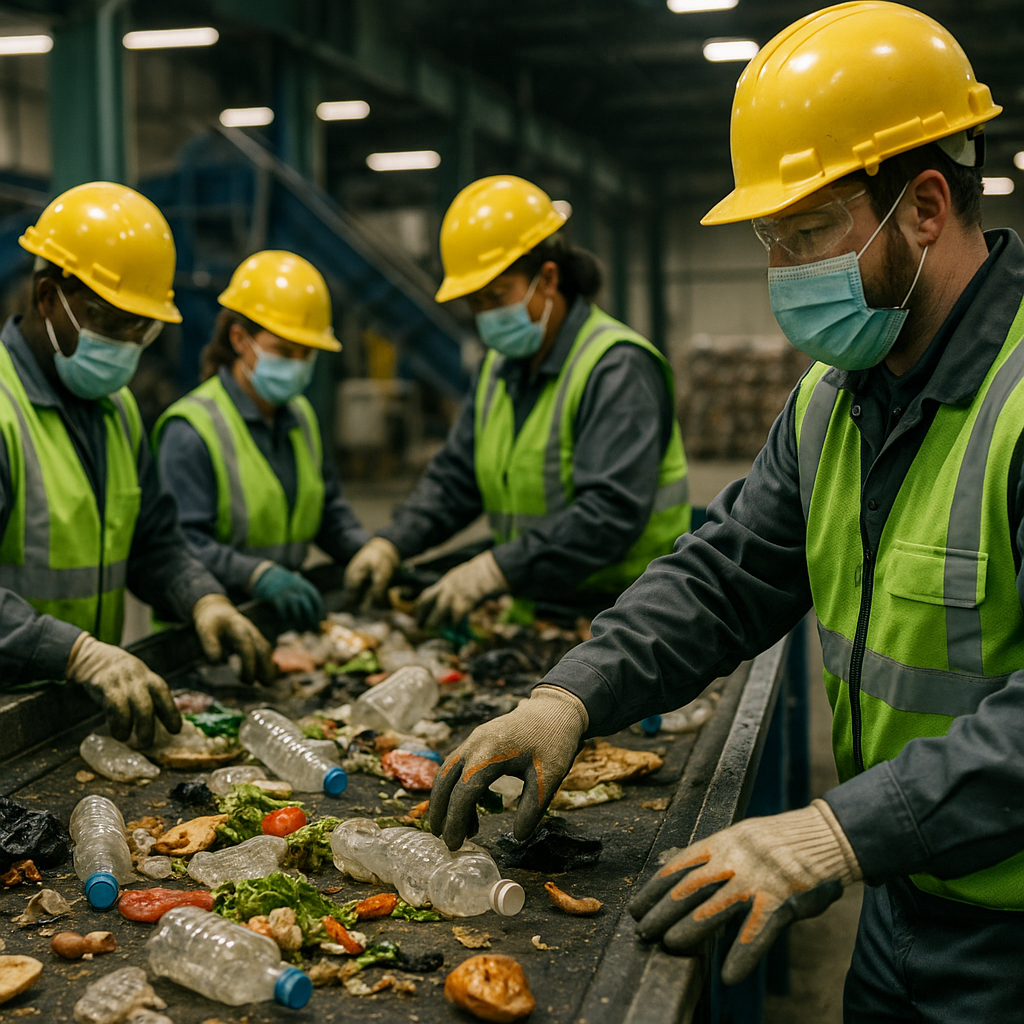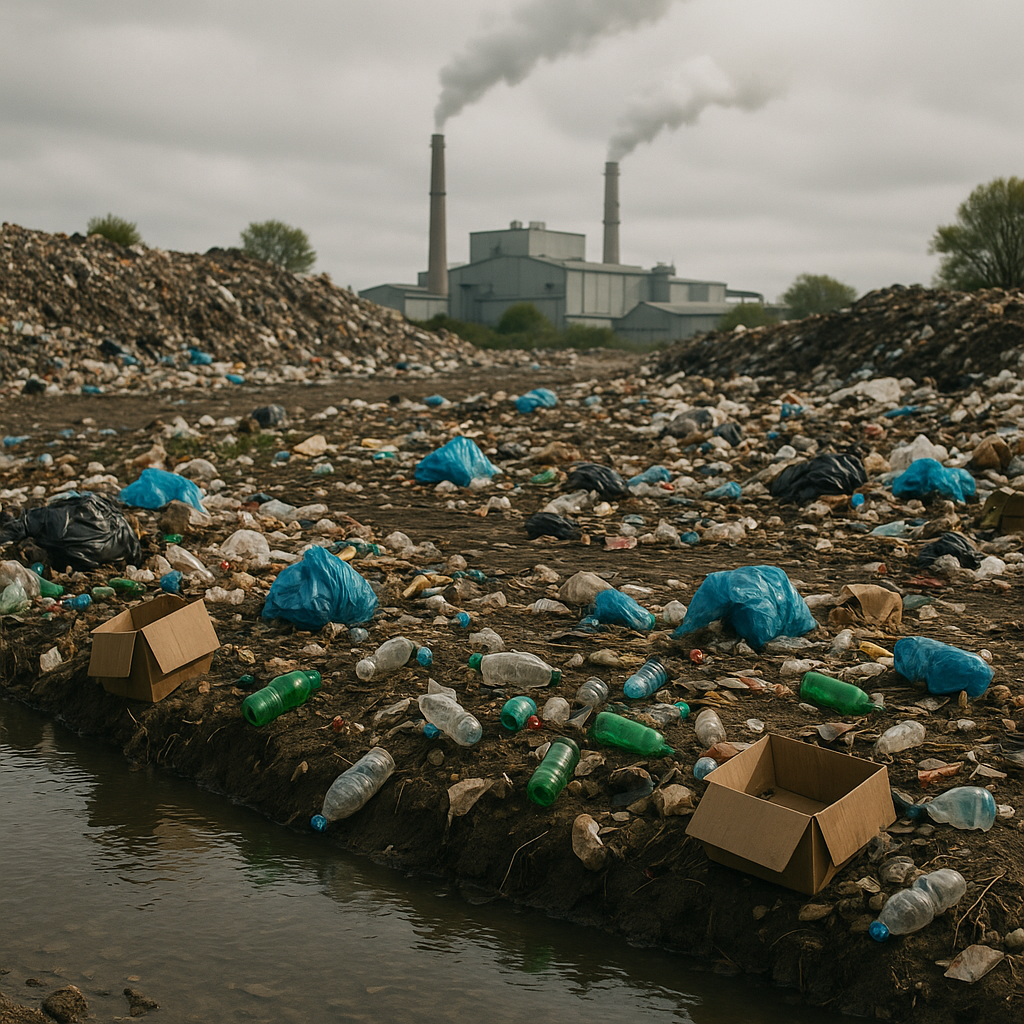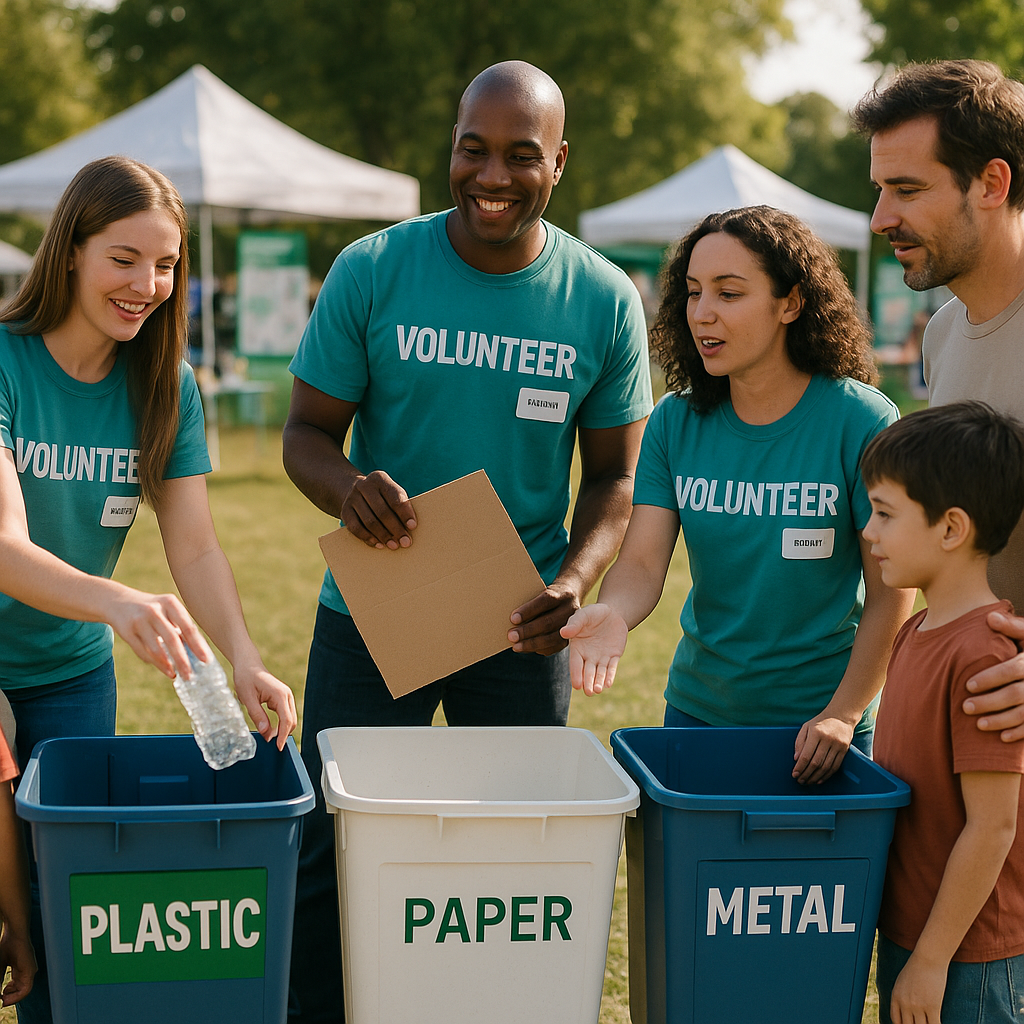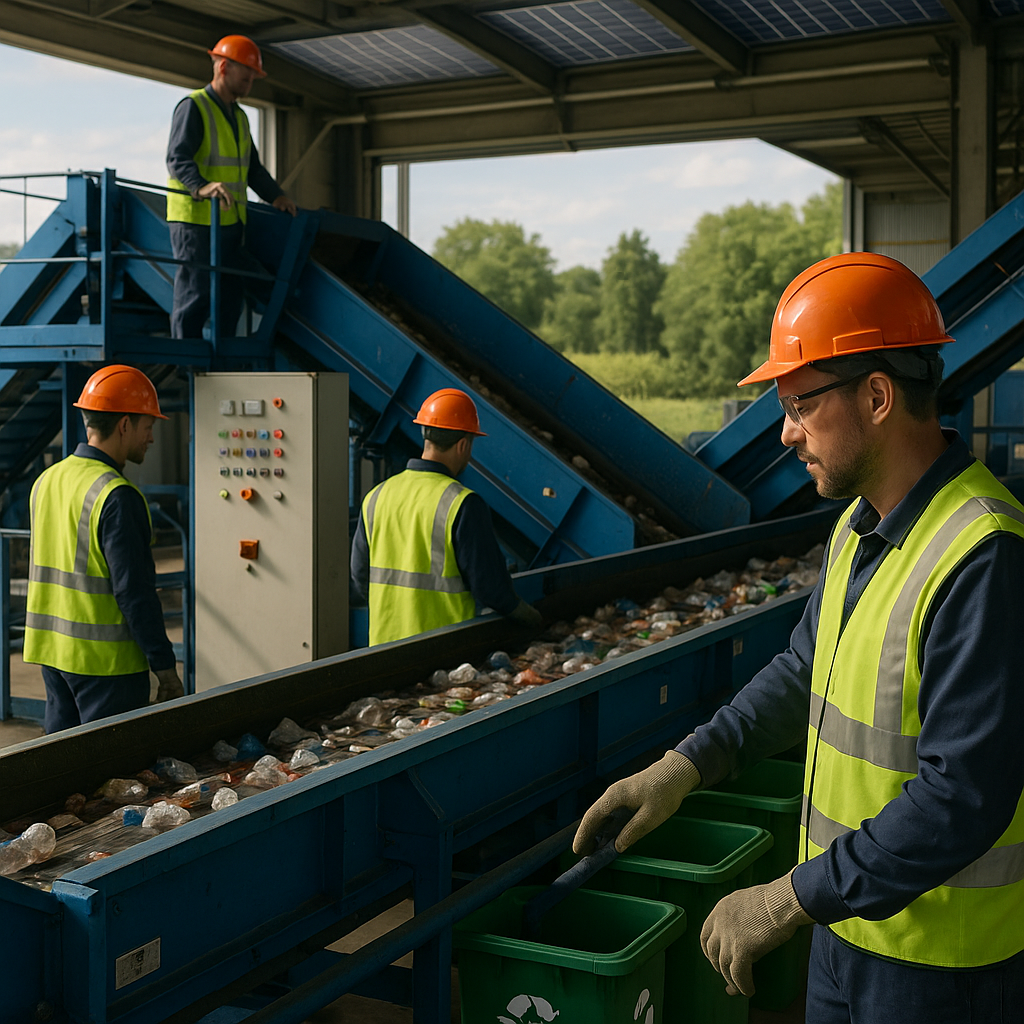5901 Botham Jean Blvd, Dallas, TX 75215
Current Challenges with Recycling? Explore Key Issues
August 26, 2025Did you know that despite our best recycling efforts, only 21% of recyclable material actually makes it through the recycling process? This statistic reveals a critical gap in our waste management systems. The remaining 79% ends up in landfills or incinerators, wasting valuable resources and harming our environment.
Contamination is a major hurdle in effective recycling today. When non-recyclable items mix with recyclables, entire batches can become unusable. Food residue on containers, plastic bags in paper recycling, and mixed materials all contribute to this issue. Sorting facilities struggle with these contaminated loads, often rejecting them entirely.
How does contamination impact recycling efforts?

Contamination is a major challenge for recycling programs today. Non-recyclable items in recycling bins create a series of problems in the recycling process. The National Waste & Recycling Association estimates that recycling contamination adds more than $3.5 billion in unnecessary costs to the U.S. waste system annually.
Contamination occurs when materials that cannot be recycled are mixed with recyclable items. Common contaminants include food residue, plastic bags, greasy pizza boxes, and electronic waste. These items not only lower the quality of recyclables but can also disrupt the recycling process entirely.
Quality Degradation
Contamination greatly reduces the quality of recyclable materials. For example, paper products soiled with food waste or liquids lose their recyclability because the fibers weaken. A single greasy pizza box can contaminate an entire batch of paper recycling, making processing impossible.
Plastic recycling streams also require clean, properly sorted materials. Mixed plastics or containers with food residue result in lower-quality recycled materials, decreasing their market value.
Economic Impact
The financial impact of contamination is substantial, affecting every stage of recycling. Sorting facilities must hire additional workers to manually remove contaminants, significantly increasing labor costs. Processing equipment often jams or breaks when items like plastic bags, hoses, or electronic cords get tangled in machinery.
Excessive contamination can lead to entire truckloads of recyclables being rejected and sent to landfills, wasting the efforts of responsible recyclers and increasing landfill fees for municipal budgets. The cost breakdown is alarming:
- Manual sorting of contaminated materials: ~$1.2 billion annually
- Equipment damage and maintenance: ~$500 million annually
- Landfilling rejected loads: ~$800 million annually
- Reduced material value: ~$1.1 billion annually
These costs ultimately pass down to communities and consumers through higher waste management fees and taxes.
Worker Safety Concerns
Contamination also poses safety hazards for recycling workers. Hazardous materials like batteries, medical waste, or chemicals in recycling bins put employees at risk of injury or illness.
Lithium batteries are particularly dangerous. When punctured during processing, they can cause fires at recycling facilities, endangering workers and potentially shutting down operations for extended periods.
Material-Specific Contamination Issues
Different recyclables face unique contamination challenges:
For plastics, food residue and improper sorting between plastic types significantly reduce recyclability. Paper products are vulnerable to contamination from liquids and food. Glass recycling can be compromised by ceramics, which have different melting points and weaken recycled glass products.
The environmental impacts of contamination extend beyond waste. Rejected recycling loads end up in landfills, resulting in unnecessary waste and a loss of resources and energy invested in collecting and transporting these materials.
Addressing contamination requires better education about local recycling guidelines, clearer packaging labels, and more consistent recycling standards across regions. Many communities are investing in advanced sorting technologies and public awareness campaigns to tackle this costly problem.
By understanding contamination’s impact on recycling systems, we can take more responsible actions to ensure our recycling efforts benefit the environment instead of adding waste and expense.
What are the environmental impacts of current recycling practices?

Recycling has long been seen as an environmental solution, reducing landfill waste and conserving valuable resources. However, recent research reveals a more complex reality: current recycling practices create their own set of environmental challenges.
Microplastic pollution is a significant concern. Studies indicate recycling facilities can release large amounts of microplastics into the environment. Research from the UK found that approximately 13% of plastics processed at recycling facilities infiltrate water or air as microplastics. Even with filtration systems, a single facility can release up to 3 million pounds of microplastics annually.
Chemical recycling poses additional environmental burdens. While this process can produce food-grade plastics from mixed waste, it requires more energy and emits more pollutants compared to mechanical recycling. The environmental damage through chemical recycling—measured in emissions, energy consumption, and water utilization—often exceeds other recycling technologies.
Transportation and logistics add significantly to recycling’s carbon footprint. Inefficient waste collection systems require extensive transportation to centralized processing facilities, leading to increased fuel consumption and emissions. This issue became particularly evident when China banned plastic waste imports in 2018, forcing countries to ship waste longer distances to alternative processing locations.
The quality of recycled materials is another challenge. Many plastics can only be recycled a limited number of times before degradation renders them unusable. Low-quality recycled plastics often end up in landfills or as downcycled products with short lifespans. For example, PET plastics from beverage bottles weaken with each recycling cycle, requiring the addition of virgin materials to maintain functionality.
Despite these challenges, recycling offers substantial climate benefits when effectively implemented. Project Drawdown estimates that successful recycling between 2020 and 2050 could reduce emissions by 5.5 to 6.02 gigatons of carbon dioxide—the equivalent of removing over one billion cars from roads for a year.
The recycling paradox illustrates that while recycling remains an important waste management strategy, it cannot solve our waste problems alone. True sustainability requires addressing the entire lifecycle of materials, from production through disposal, with a particular emphasis on reducing virgin plastic production and designing products for recyclability.
How can recycling practices be improved?

Improving recycling requires multiple strategies to work in harmony. While many understand the basic concept of recycling, systems often underperform due to contamination, inefficient processes, and economic barriers. Addressing these challenges calls for a coordinated approach across education, technology, and policy.
Effective recycling systems depend on well-informed participants who know what can be recycled and how to prepare materials properly. Communities with robust recycling education initiatives typically see higher participation rates and less contamination in their recycling streams.
Enhancing Recycling Education
Clear communication about local recycling rules is fundamental to any successful recycling program. When residents understand exactly what can and cannot be recycled in their area, contamination rates drop significantly. This education needs to extend beyond merely distributing guidelines.
Schools play a vital role in building recycling habits from an early age. By integrating recycling concepts into existing subjects, students gain a deeper understanding of waste management principles that they carry into adulthood, often becoming advocates who spread recycling knowledge to their families.
Storytelling helps connect recycling to community values and real-world outcomes. Sharing success stories about local recycling impacts helps residents understand why their participation matters. Personal narratives from community members who have embraced recycling can inspire others to adjust their habits.
Implementing Economic Incentives
Financial motivations can significantly boost recycling participation rates. Deposit-refund systems, where consumers pay a small deposit when purchasing items like beverage containers that is refunded when they return the container for recycling, have proven highly effective. In countries with established deposit systems, recycling rates for covered containers often exceed 90%.
Tax credits for businesses that invest in recycling technologies or use recycled materials in their production processes encourage development in the recycling infrastructure. These incentives help develop more efficient recycling methods while creating markets for recycled materials.
Subsidies for recycling facilities help expand processing capacity and improve technology. When governments provide financial support for recycling infrastructure, more materials can be diverted from landfills and processed efficiently.
Advancing Recycling Technology
Technological innovations are transforming how we sort and process recyclable materials. Advanced sorting equipment using artificial intelligence, optical scanners, and robotics can identify and separate different materials with greater accuracy than traditional methods. These technologies reduce contamination and increase the quality of recycled materials.
Chemical recycling technologies are emerging as solutions for materials that have traditionally been difficult to recycle. These processes break down plastics into their chemical components, which can then be used to create new plastic products. While still developing, these technologies could significantly expand the range of recyclable materials.
Mobile apps make recycling information more accessible to consumers. Applications that provide location-specific recycling guidelines, barcode scanning features to check recyclability while shopping, and reminders about collection schedules help residents recycle correctly and consistently.
Designing Products for Recyclability
Product design is crucial in determining whether items can be recycled effectively. Companies need to consider the entire lifecycle of their products, including end-of-life recycling. Simple changes like using single materials instead of composites can make products much easier to recycle.
Packaging materials should be selected with recyclability in mind. Avoiding problematic materials like black plastic (which is difficult for sorting equipment to detect) or multi-layer packaging can significantly improve recycling outcomes. Clear labeling of recyclable components also helps consumers dispose of items correctly.
Standardization of materials would greatly simplify the recycling process. When products use consistent, easily identifiable materials, sorting becomes more efficient and contamination decreases. Industry collaboration on packaging standards could drive major improvements in recycling rates.
Addressing Global Plastic Waste Trade
The international movement of plastic waste presents significant challenges for recycling systems worldwide. Many developed countries have historically exported their plastic waste to nations with less stringent environmental regulations. This practice often results in improper disposal and environmental contamination.
International agreements like the Basel Convention amendments are beginning to regulate plastic waste shipments more strictly. These regulations aim to ensure that waste is managed responsibly regardless of where it’s processed. Supporting these efforts helps create a more equitable and environmentally sound global recycling system.
Building domestic recycling capacity reduces reliance on exports. When countries develop robust recycling infrastructure within their borders, they can process more materials locally under appropriate environmental standards.
Implementing Policy Changes
Extended Producer Responsibility (EPR) policies hold manufacturers accountable for the end-of-life management of their products. These policies create incentives for companies to design products that are easier to recycle while also providing funding for recycling programs. EPR systems have proven effective in increasing recycling rates for electronics, packaging, and other products.
Minimum recycled content requirements mandate that products contain a certain percentage of recycled materials. These policies create demand for recycled materials, supporting recycling economics. California recently passed legislation requiring plastic beverage containers to contain increasing amounts of recycled plastic over time.
Landfill bans or disposal fees for recyclable materials discourage disposal and encourage recycling. When properly implemented with adequate recycling alternatives in place, these policies can significantly increase diversion rates for targeted materials.
Improving recycling requires coordination across these strategies. By enhancing education, implementing economic incentives, advancing technology, focusing on product design, addressing global waste trade, and enacting supportive policies, we can transform our recycling systems into more effective tools for resource conservation and waste reduction.
Conclusion: The future of recycling

Recycling faces a pivotal moment. Despite significant challenges, it remains vital in waste management and environmental conservation. The future of recycling involves integrating several approaches. Advanced sorting technologies driven by AI, innovative mechanical recycling methods, and novel chemical processes like pyrolysis and enzymatic recycling offer promising pathways forward. These technologies can handle more plastic types, including those once deemed unrecyclable.
However, recycling alone cannot resolve the plastic pollution crisis. A comprehensive approach is needed, including reducing plastic production at its source, designing products for recyclability, improving collection infrastructure, and transitioning toward a genuine circular economy model. Tackling the complex issues of plastic waste requires coordinated global action from governments, industries, and consumers working together toward sustainable solutions.
For businesses and municipalities aiming to enhance their recycling programs and contribute to a sustainable future, contact Okon Recycling at 214-717-4083. Our team provides expert guidance on implementing effective recycling solutions tailored to your specific needs.
